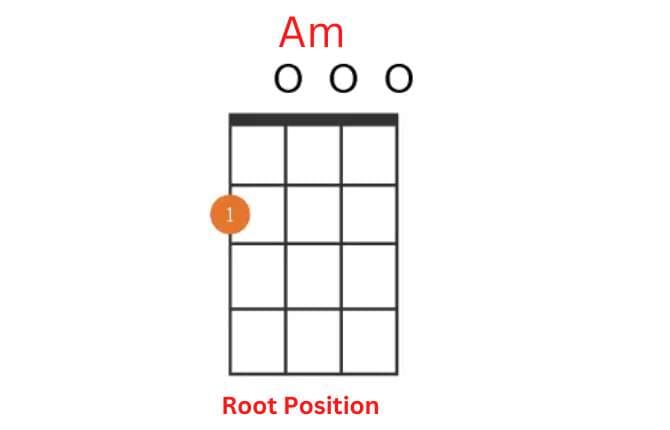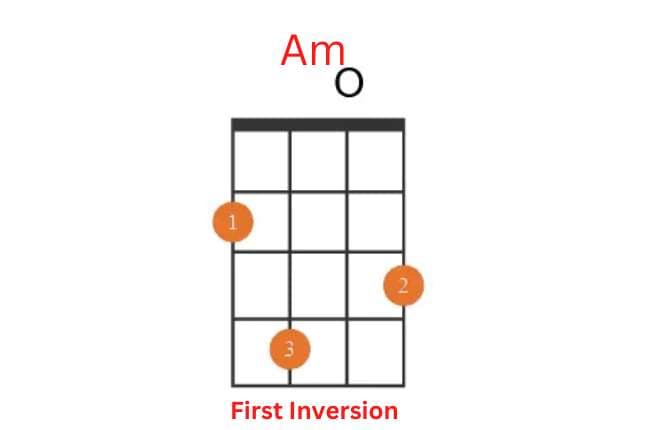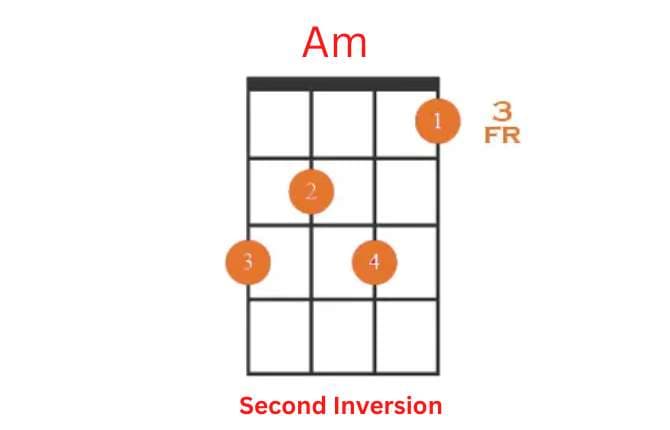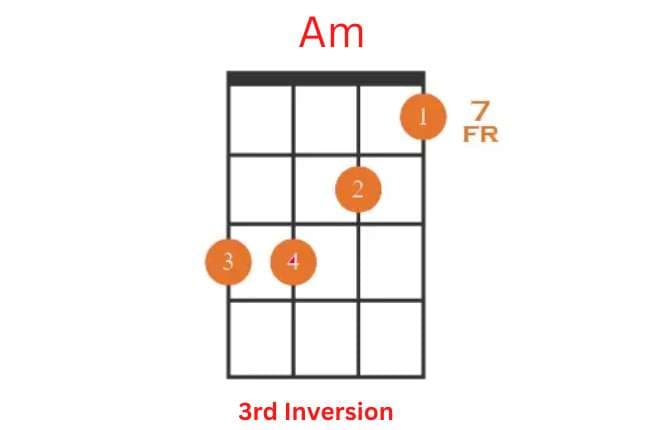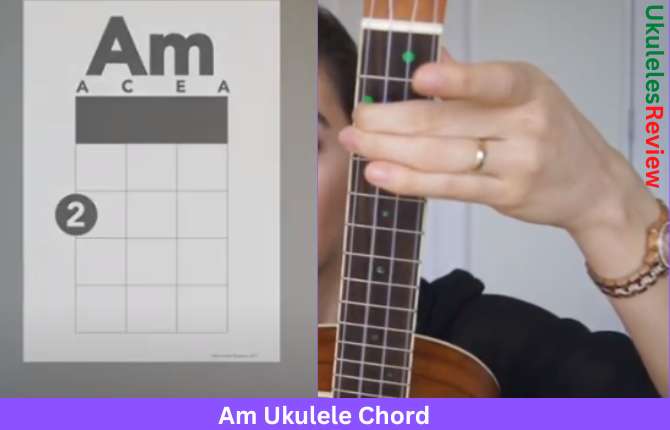
Are you attempting to play the Am ukulele chord (actually, A minor ukulele chord)? You are in the correct place. First, test the difference between a chord and a single note.
A note implies a solo tone, where three or more notes are played together in a chord. Single notes are required for melody, improvisation, or single writing. Creating melody and chord progressions is done by chords.
Placing your fingertips is always best without leaving your fingerprints on the strings. As we always say, imagine the claw of an eagle.
Your finger knuckles are required to pop up for almost all performed chords. It assists aloof dull notes away. These notes are such notes that you won’t be able to hear clearly.
How to Play the A Min Chord on the Ukulele
The Am includes the notes A-C-E. To form an A minor, receive the minor triad method (1-b3-5) and use it in a major scale (A, B, C#, D, E, F#, G#).
Put the initial, 3rd, and 5th scale levels in an A major scale, A-C#-E. The reason is that the Am features a minor chord, lowering the 3rd scale degree by a half step according to the minor trio method that finishes up on the notes A-C-E for the A minor.
Besides, test your ukulele frets. These remain the spaces in the ukulele neck that can be individually detached. If you’ve established your minor chord once, put your fingers on the frets’ back edge. The fret’s back edge is toward the ukulele body, where you are strumming.
Root Position: The Am Chord
The index finger will be your 1st finger, the middle finger will be your 2nd finger, the ring finger will be your 3rd finger, and the pinky finger will be your 4th finger.
An oral rule we like to abide by is to use your 4th finger on the 4th fret, 3rd finger on the 3rd fret, 2nd finger on the 2nd fret, and 1st finger on the 1st fret. Making it assists shift chords and implies you’re capable of developing stronger fingers.
To produce the A minor, put your 2nd finger on the 4th string, which is nearest to your chin, on the 2nd fret. You might be strumming the notes A – C – E when playing all four Strings.
- To press the G string on the second fret, apply your Index finger.
- In an open position, all other strings are played.
First Inversion: Am Ukulele Chord
We’ll move forward with a little different fingering than the simple basis for the 1st inversion of the A minor. We always describe several ways that you can play the chords we talk as you don’t know what will work best when you transpose or go to another chord.
So to accomplish the 1st inversion, we need to advance with a somewhat more difficult one, but even then, like the root position, all you have to do is to press a similar string at the same fret.
Therefore, for this, you are to press the C string at the 4th fret and the A string at the 3rd fret. Just do the job in the following way:
- Apply your index finger to press the G string at the first fret.
- Utilize your mid-finger to press the A string at the third fret.
- Employ your ring finger to press the C string at the fourth fret.
A little distinct in comparison to the root position, but still, knowing is better while you’re playing some songs, having chords in the same area. After that, it’ll become simple to do and very helpful.
2nd Inversion: The Am Uke Chord
The 2nd inversion is that you have to play with the fingers down the neck, nearer to the body of your ukulele. Again, you may discover a use for it down the road whenever you will arrive at the upper intermediate levels of your ukulele playing. But anyway, we’ll describe where to push to get it done.
You have to utilize all four of your fretting fingers for it. Therefore, follow the following sequence:
- Utilize your Index finger to press the A string on the third fret.
- To press the C string on the fourth fret, utilize your mid-finger.
- Employ the remaining of your fingers to press the G and the E string on the fifth fret.
It can become tough to accomplish, but you can effortlessly reach there with practice.
3rd Inversion: The A Minor Uke Chord
Of all the reverses we’ve shown in this lesson, it may be the easiest one to accomplish, except for the root position. You have to employ all your fingers again, but the sequence is very effortless, and you won’t feel any trouble performing it correctly.
So here’s how and where your fingers need to be placed in order:
- To press the A string on the seventh fret, utilize your Index finger.
- Utilize your mid-finger to press the E string on the eighth fret.
- Apply your 4th finger to press the G string on the ninth fret.
- Employ your pinky finger to press the C string on the ninth fret.
Famous Songs that use the A Minor Ukulele Chord
The most popular song, “Let It Be,” is performed by The Beatles, one of the most recognizable bands in history. This song utilizes a straightforward chord progression, simple to play on the ukulele.
Believe us that you’ll become the center of attention of your company while playing this track on your device.
It will be fun to jam with “Let It Be” as a beginner ukulele player. The development remains virtually the same throughout the track, so you don’t need to think about changing the development part way through the tune.
Conclusion – How to play A Minor on Ukulele
Finally, it’s one of the easiest chords to know how to perform the Am ukulele chord, you’ll have to utilize it while playing.
In addition to the comfort of the initial position, we’ve given you a few other variations that you could assemble and utilize later on while playing.
Read also:
